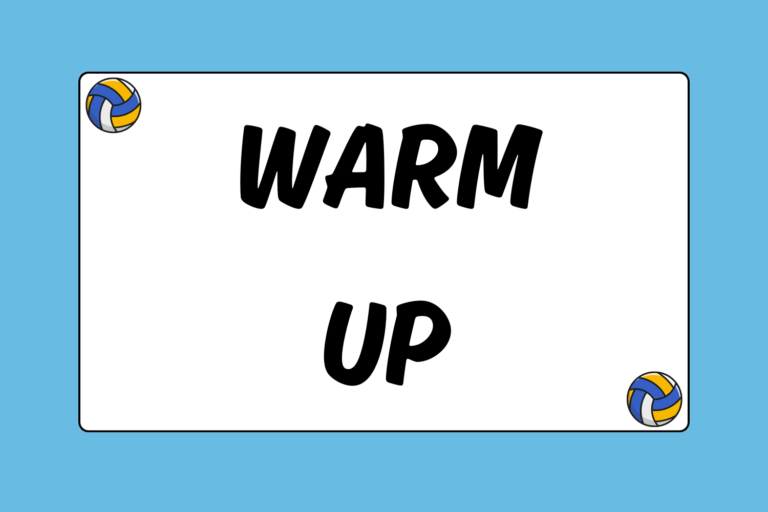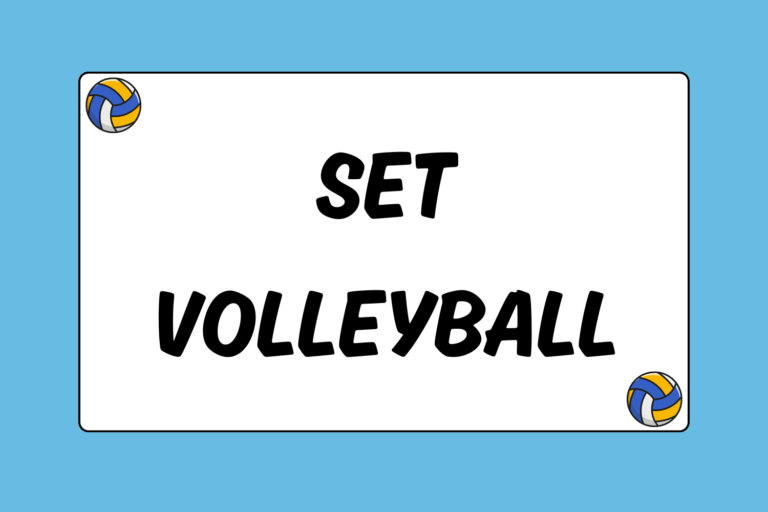In volleyball, the key to playing defense is a willingness — even a desire — to hit the floor and bang up your knees, just to protect your side of the court. Here are five volleyball tips for making great defensive plays.
1. Be Still Before Contact
A brief review of elementary physics will help shed some light on why a defender should be still before a hitter connects.
Newton’s first law of motion states that an object in motion tends to stay in motion unless acted upon by an outside force—essentially what we laymen call momentum. When this principle is applied to the volleyball court it is easy to see how the principles of Newton’s law can easily get a defender into trouble.
Consider this scenario. A defender playing middle back watches the opposing setter play the ball to the outside hitter. The defender quickly moves to the left sideline to prepare to dig the ball, and are still in motion when the hitter contacts the ball. If the ball is hit in the opposite direction of that the defender is heading, they have to exert extra effort to reverse his or her motion before moving towards the ball (since an object, or player in this case, in motion will naturally continue to be in motion).
So it takes more time to change the direction of one’s movement than to make the initial jump from a stopped and balanced position. And as a defender, every second—actually every hundredth of a second—counts.
Maintaining the stopped position before the hitter contacts the ball is the best thing you can do to immediately improve your defensive output. It is even better to be slightly out of position but still than frantically in motion and closer to the correct spot.
As if that weren’t convincing enough, being stopped on defense also allows you to better see and read the hitter, which in turn will help you predict the path of the ball.
2. Make Sure You Can See the Ball
The concept is simple enough: if you want to dig the ball then you need to be able to see it.
It may seem like a fundamental and obvious point, but defensive players often lose sight of the ball while preparing for the dig. So if you find yourself directly behind your blockers or in any position that obscures the ball, move quickly to a sport where you can see. Defense is hard enough—there’s no need to add an invisible ball to the equation.
3. Watch the Hitter
The best way to anticipate where the ball will be hit is to watch the opposing hitter’s approach and arm swing. As a defender, there are two main things to look for when watching a hitter’s approach:
- The speed of the approach: The speed of hitter’s approach almost always indicates the probable speed of the hit (for example, a slow approach usually results in an off-speed hit).
- The angle of a hitter’s shoulders: Hitters are likely to hit the same direction that their shoulders are pointing,
A hitter’s arm-swing can also be a gold mine of information. Look for the clues listed below to get an idea of what type of hit you should be ready for.
- The hitter’s arm speed: Arm speed is a great indicator of what an opposing player is planning to hit. A slow arm swing generally results in a tip or an off-speed ball, where as fast arm swing points to a high velocity attack.
- The height of their elbow: The same thing can be said of a hitter who drops their elbow below their ear. In order to hit a ball that has a downward trajectory, a hitter must make contact on top of the ball and a dropped elbow makes that type of contact nearly impossible. If a hitter drops their elbow, be ready for a tip or a roll shot.
- THe point at which they contact the ball: A hitter’s contact point can help you guess the trajectory of the resulting hit. For example, if contact is made underneath the ball then you know that the ball will have an upward flight path.
4. Shift Your Weight to the Balls of Your Feet
A defensive player needs to be ready to spring to action in the shortest amount of time possible. It is much easier to react quickly when the majority of your weight is on the balls of your feet (versus standing flat footed), so get in the habit of staying on your toes.
5. Keep Your Hands in a Neutral Position
The introduction of the overhand dig changed the face of volleyball. A defensive player who has mastered the overhand dig technique can cover a larger area of the court than one who only uses a forearm technique. Why? Because using a forearm dig off a deep ball takes significantly more time to execute than an overhand dig of the same ball, and time is not something that volleyball defenders have to spare.
Traditional defensive technique teaches defenders to receive a hit with their arms hanging down loosely in front of them. While this technique adequately prepares a defender to execute a forearm dig, the low hand position is not conducive to the overhand method, so now players are being taught the neutral position (see below). It is the optimal stance for both the underhand and overhand dig.
Putting it All Together
Now that you’re with five tips that are sure to improve your defensive game it’s time to put them to get out on the court and put them to good use. So get out there!





